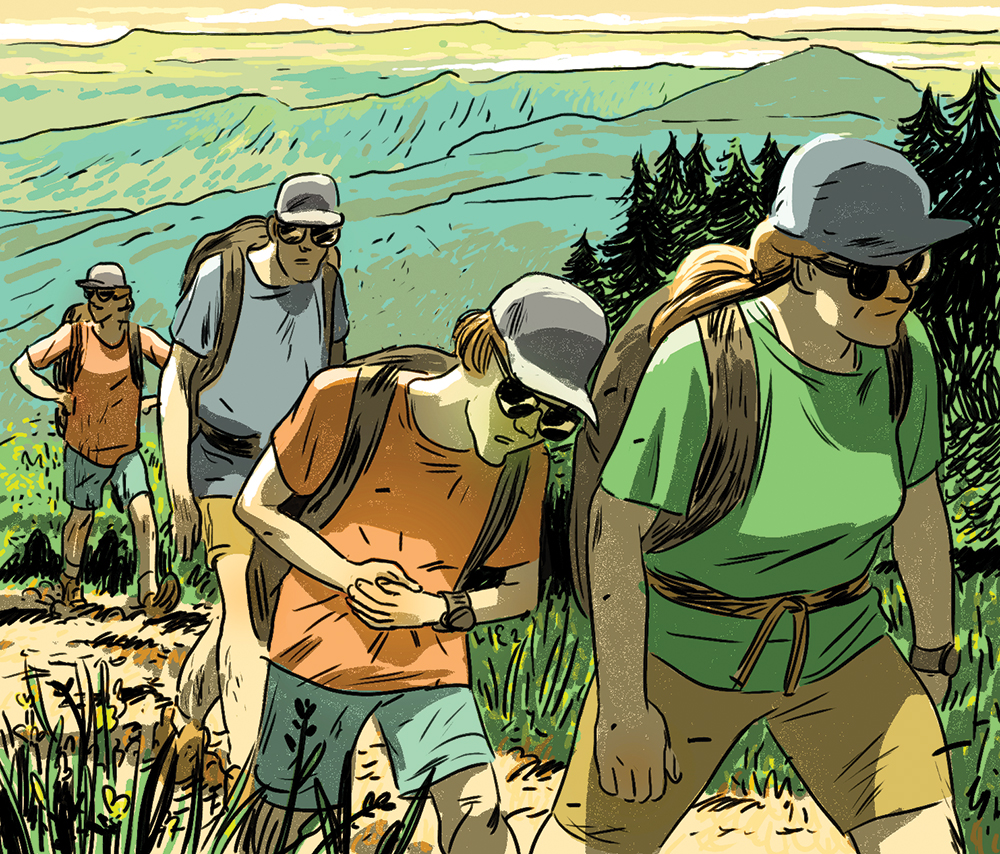Take a deep breath and read how you can survive altitude sickness.
Emergency Situation: You’re hiking in Grand Teton National Park, admiring the incredible vistas and enjoying the crisp mountain air. After several hours, you develop a pounding headache, feel breathless, and experience lightheadedness and dizziness. Perhaps that crisp mountain air is just a little too thin? You suspect you’ve developed altitude sickness. What should you do?
Solution: Descend to lower elevations. And fast. Here’s why.
As much as one-fourth of the population is at risk of altitude sickness when visiting elevations above about 8,000 feet. The symptoms mentioned are most common, but there are others: nausea, loss of appetite, fatigue, disorientation and vomiting. The good news is that most symptoms pass on their own in 24 to 72 hours, as the body acclimates to the higher elevation. The bad news is that you might not have that much time.
We often hear “less oxygen” in the air causes altitude sickness. That’s a myth — or at least an oversimplification. Altitude illness is caused by hypobaric hypoxia, or a reduction in the pressure needed to push oxygen through the lungs to our red blood cells. Since there is progressively less pressure the higher you go, the condition worsens as you ascend.
There are three stages (or syndromes) associated with the condition: acute mountain sickness (AMS), high-altitude cerebral edema (HACE) and high-altitude pulmonary edema (HAPE). HACE and HAPE are serious medical emergencies and require immediate descent and, often, supplemental oxygen. However, these conditions are more likely to affect mountaineers and high-altitude skiers than day hikers, and they’re not nearly as common as AMS. The Centers for Disease Control and Prevention estimates that HAPE occurs in about one in 10,000 skiers in Colorado.
“If you get a headache at altitude, assume it’s being caused by the altitude and not something else,” says Dr. Chris Davis, medical director of the Colorado Clinic for Altitude and Mountain Medicine. “If you don’t go any higher, AMS will pass over time, and ibuprofen can help with the symptoms.” The quickest way to feel better is to descend to lower elevations.
Acute mountain sickness can be avoided altogether by acclimation. One strategy is to limit any ascent to less than 8,000 feet in one 24-hour period, preferably spending one night at a midpoint altitude. A mountaineering rule is to gradually ascend by sleeping one night for each additional 1,500 vertical feet above 8,000 that you travel.
Additional preventive measures include drinking more fluids and eating less salty foods. Try to give yourself a day or so of rest before exerting yourself at higher altitudes. So if you’re planning to hike in the mountains, give yourself a day to acclimate before hitting the trail.
If you know from experience that you struggle with AMS, consider talking to your doctor about a prescription drug called acetazolamide. “It accelerates the acclimation process,” Davis says.
JOSH PIVEN is the co-author of The Worst-Case Scenario Survival Handbook series. Visit joshuapiven.com.
Inspire Leadership, Foster Values: Donate to Scouting
When you give to Scouting, you are making it possible for young people to have extraordinary opportunities that will allow them to embrace their true potential and become the remarkable individuals they are destined to be.
Donate Today

Be the first to comment